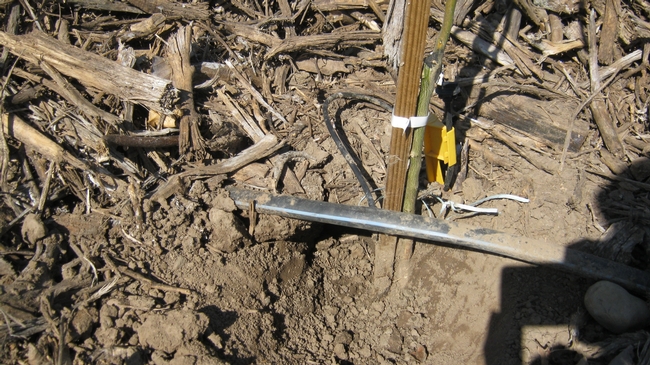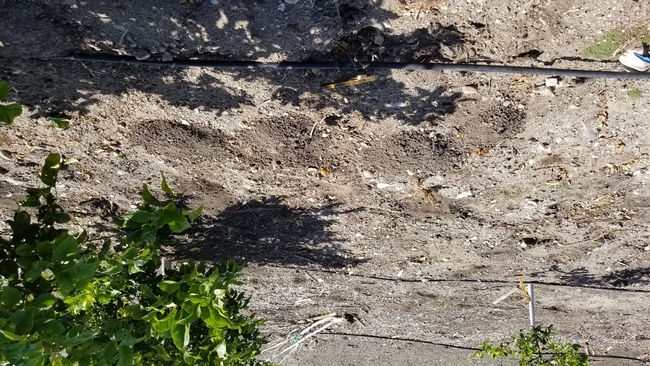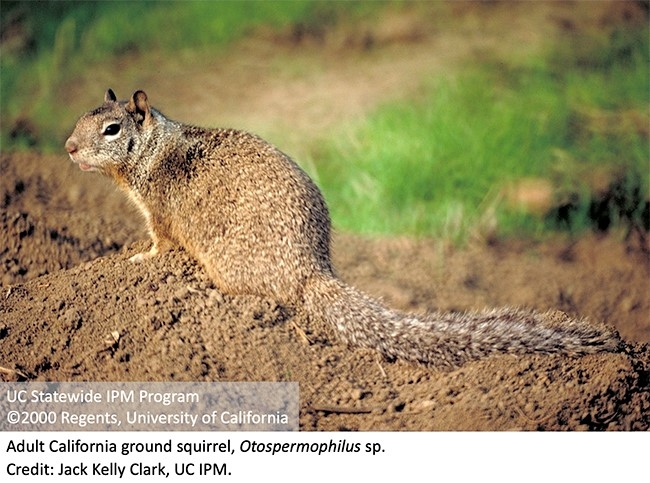- Author: Roger Baldwin
Pocket gophers (Thomomys bottae) may be responsible for more damage to orchards than any other mammal species. It can be important to minimize their presence in orchards and this is particularly relevant for young trees that are highly susceptible to gopher damage. Since reproduction increases toward late winter through early spring, control is more effective before this reproductive pulse since there are fewer individuals to remove. When soil moisture is high, gophers make mounds frequently, easing identification of active tunnel systems, and thus reducing the time required to treat the orchard. Gopher control programs include a variety of tools including trapping, rodenticides, burrow fumigants, and potentially biocontrol, among other options. Below are some thoughts on the utility and implementation of some of the more commonly used strategies for managing this burrowing rodent.
https://ceventura.ucanr.edu/newsletters/Topics_in_Subtropics99392.pdf
Eric Hamilton
Eric.hamilton@ufl.edu
Root-farming gophers might be our closest agricultural relatives
Although you'll probably never see them, you can spot them by the tell-tale mounds of sandy soil dotting a field: pocket gophers. Beneath your feet, the gophers continuously create and remold a labyrinth of winding tunnels hundreds of feet long.
And, perhaps, tend the world's most recently discovered farms. Root farms, that is.
A University of Florida biology professor and undergraduate student have discovered that southeastern pocket gophers tend to fields of subterranean roots they harvest for food. The discovery makes the rodents the only mammal — other than humans — known to farm for a living.
“They're providing this perfect environment for roots to grow and fertilizing them with their waste,” said Veronica Selden, who recently graduated from Florida with a degree in zoology and is the first author of the new paper.
The gophers' daily harvest of their root crops accounts for an average of 20% and as much as 60% of their energy needs, which helps make up for the intense energy cost of burrowing in dense soil. Selden and UF Professor Jack Putz published their findings July 11 in the journal Current Biology, where they argue that the root cropping behavior of the gophers constitutes a kind of rudimentary farming.
Enigmatic creatures, pocket gophers spend nearly their entire lives below ground in sprawling tunnels up to 500 feet long. Although often thought of as pests, they eat only roots and rarely damage crops. Nor do their strong tunnels undermine the ground.
“They live entirely alone in a tunnel system that's 100 meters long. Dark and wet like a sewer pipe,” Putz said. “The roots grow in like stalactites and stalagmites. They cover the walls of their tunnel.”
Indeed, sewers helped inspire the project. Putz and Selden were puzzling over how the gophers got enough energy to dig when they recalled the perennial problem of roots growing into sewer pipes in homes.
“If roots grow into these man-made tunnels, perhaps they'll grow into these gopher tunnels that have waste to fertilize them,” Selden said.
Fortunately for gophers, though, the roots are their main food source.
The project relied on ingenuity, collaboration and — in an homage to the gophers — a lot of digging. Out at the property where Putz lives, he and Selden spent months trying to keep gophers out of their tunnels so they could measure the roots that grew back in. Using dams of wood or metal, the researchers attempted to block the gophers from their tunnels, but to no avail — the gophers merely went around.
Eventually, Putz and Selden turned to 50-gallon drums with the ends cut off. After even more digging, the researchers placed the open side of a drum into the soil to surround a patch of gopher tunnels while allowing plants on the surface to keep growing. The cylindrical shape provided 360 degrees of protection from gopher interference. (The scientists note in their paper that, while gophers were certainly inconvenienced by the project, none were harmed.)
Calculating the daily rate of root growth allowed Selden and Putz, with help from UF biology Professor Emeritus Brian McNab and others, to calculate how much of the gophers' energy needs could be met by harvesting their crops.
They discovered that digging a tunnel costs far too much energy to be made up by the roots gophers eat while excavating. But, by harvesting the roots that grow into already-dug tunnels over time, the gophers can gain enough energy to keep digging tunnels in search of more food.
Although no other mammals are known to farm, other animals definitely do. Fungus-farming ants are perhaps the most famous. They sow and tend to fields of fungus and protect them from disease with antibiotics — much like how human farmers wield herbicides against weeds.
Unlike these ants, pocket gophers neither sow nor weed their crops. Indeed, while the gophers clearly harvest their crops of roots to survive, and take steps to defend and promote their crops, the new study reveals that the definition of “farming” is far from clear.
“Planting the crop, for some people, is what constitutes agriculture,” said Putz.
Yet many other animals, and also different human cultures, use horticultural techniques to tend to crops they don't plant themselves, Putz noted.
“I think the whole issue is intellectually exciting because it's not really settled,” he said.
Selden hopes the debate calls attention to the overlooked animals.
“Pocket gophers are a lot more interesting than people give them credit for. They're really important ecosystem engineers,” said Selden, who started her research career by pondering the habits of the rodents and has gone on to study the ecology of bats and bees. “They deserve more attention.”
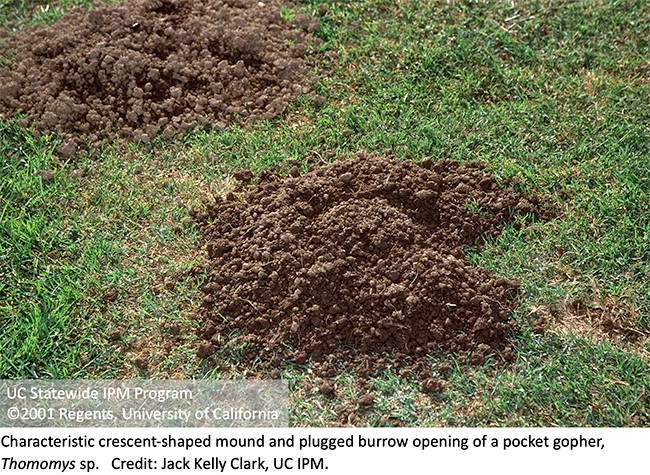
- Author: Cheryl Reynolds
New online course on the management of
ground squirrels and pocket gophers now available
—Cheryl Reynolds, UC Statewide IPM Program
We're pleased to announce that a new online course on managing ground squirrels and pocket gophers has been added to UC IPM's growing library of online training courses. This course consists of eight video segments recorded by Dr. Roger Baldwin, a University of California Cooperative Extension Specialist in Human-Wildlife Conflict Resolution. Originally presented in June of 2020 as part of the UC Ag Experts Talk webinar series, the course covers pest identification, types of damage they cause, and the importance of their biology and ecology.
If you are a pest management professional or grower interested in vertebrate pest management, then check out this course! You'll learn about current control strategies such as habitat modification, baiting options, fumigation, and trapping. The course content is free to anyone who wishes to view it. For those requiring a certificate of completion and continuing education units (CEUs), the regular cost is $20, but we are offering a reduced price of $10 through October 31, 2021. To receive the discount, enter the code SquirrelGopher50 in the voucher box when making the payment.Managing Ground Squirrels and Pocket Gophers has been approved by the California Department of Pesticide Regulation (DPR) for 1 CEU in the Other category and also by Certified Crop Advisor (CCA) for 0.5 unit of IPM credit.
If you are a DPR license or certificate holder with a last name beginning with letters M through Z, then this will be your year to renew. Now is a good time to check out the other UC IPM online training courses offered. All are 50% off the regular price through October 31st. DPR will be sending out renewal packets in August and strongly suggests returning them by October so that your license or certificate can be renewed before it expires.
UC IPM not only offers courses accredited by DPR, but many courses are also approved by the California Structural Pest Control Board (SPCB), Certified Crop Advisor (CCA), the Western Chapter of the International Society of Arboriculture (WCISA), and the Arizona Department of Agriculture.
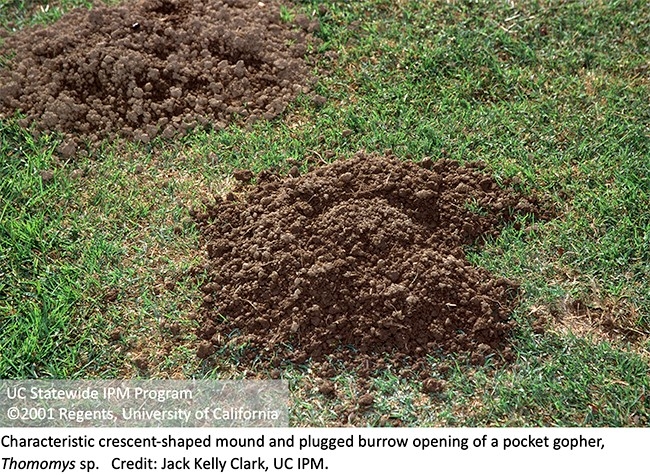
- Author: Ben Faber
Learn about vertebrates in the orchard.
And all those other animals
that are attracted to avocado orchards
like ground,squirrels,
coyotes,
birds,
mountain lions,
bobcats and
others
The California Avocado Society,
California Avocado Commission
and University of California Cooperative
Extension have their bimonthly meeting:
June Seminar Topic
Vertebrate Management
(2 hours of DPR CE Approved)
Speakers: Niamh Quinn: Human-Wildlife Interactions Advisor
Dates/Times/Locations:
Tuesday, June 11, 2019, 1:00 p.m. to 3:00 p.m.
UC Cooperative Extension Office Auditorium, 2156 Sierra Way, San Luis Obispo, CA 93401
Wednesday, June 12, 2019, 9:00 a.m. to 11:00 p.m.
UC Cooperative Extension Office Auditorium, 669 County Square Dr., Ventura, CA 93003
Thursday, June 13, 2019, 12:30 p.m. to 2:30 p.m.
Fallbrook Public Utility District Board Rm., 990 East Mission Rd., Fallbrook, CA 92028
No registration is required.
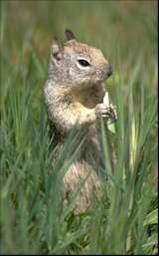
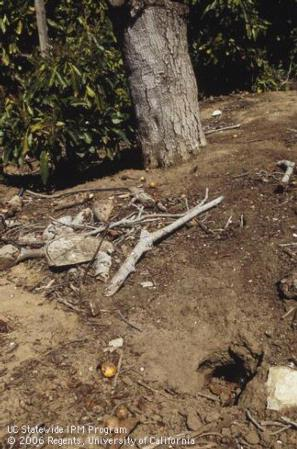
- Author: Ben Faber
We are creatures of habit and when we see the effects of a treatment, we can often persist in seeing the same or similar symptoms and assuming the cause is the same. In a recent case, a newly planted ‘Pixie' orchard, planted in August had gone into an old ‘Valencia' ground. The trees went through an adjustment period, but still didn't look sprightly in the fall. The grower applied a hand application of urea on the rootball that within 10 days had caused the trees to go into a salt swoon. Meaning, they got too much fertilizer that burned them. The grower seeing the effect, immediately started the sprinklers, but the damage was done. Several months later the trees had either died or were still lingering, but hanging in there. The trees were still coming out of winter, but the trees hadn't perked up. It was a dry winter and some of the yellowing was due to underirrigation, that overall yellowing from lack of nitrogen and the leaves were curled. But the assumption was still that the trees were recovering from the salt burn from the urea.
Looking more closely at the trees, something else was odd about some of the trees that were continuing to die. The leaves suddenly wilted. Getting down on hands and knees and digging around the roots, there were few roots and ………………………….a tunnel. A gopher had been at this tree and the lack of roots were probably due to Phytophthora root rot. Looking around there were some old ‘Valencias' that had been hit by gophers and there were gophers mounds and runs all over the place.
So, young trees planted in the heat of the summer into root rot ground with gophers waiting in anticipation that had been salt burned in a year with little rainfall. A lot of causes for trees that generally weren't happy – triste, as they say in French.
So what are the lessons here? Avoid old citrus ground when planting with citrus, and if you can't make sure, don't plant in a stressful period. Phytophthora loves stressed trees and adding lack of rainfall an gophers and salt, just heightens the stress. Make sure to get the irrigation right. Don't irrigate them to the schedule of the older trees and start them off on one of the phosphite materials.
Images
Wilted, yellow leaves from lack of water and Phytophthora
Gopher chewing on stem
Gopher run and lack of roots from Phytopthora and gopher
Gopher mounds in planting area
Older Valencias dead and dying from Phytophthora and gophers


